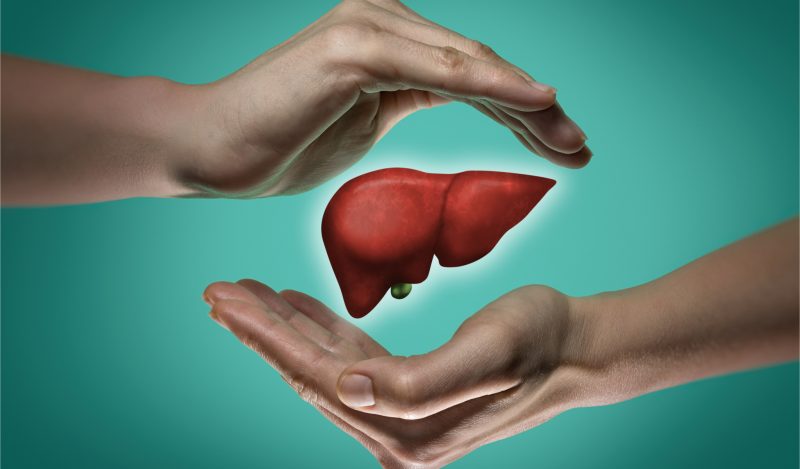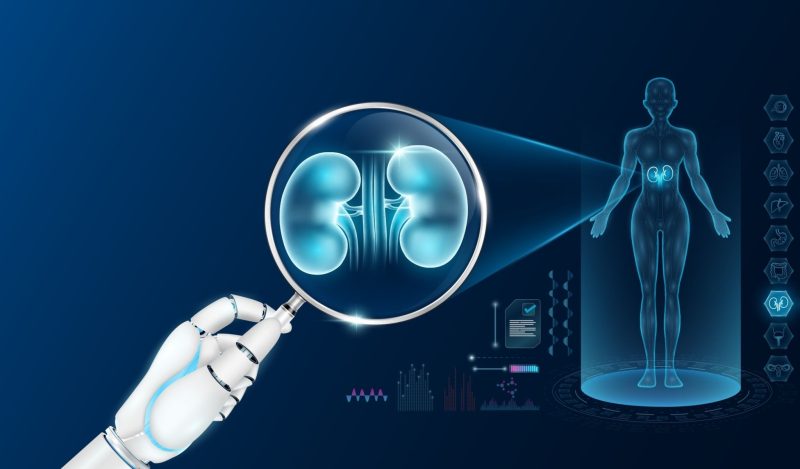The number of previously healthy children younger than 16 years of age with mysterious hepatitis cases have doubled in two weeks to 450 cases worldwide, including 11 deaths. Most cases have been reported in the UK (160) and the US (currently, 180). In Europe most cases are found in Italy (35) and Spain (22). Over 8-14% of the patients needed liver transplantation. These children will be on lifelong medication. Until now the real cause of a sudden spark in hepatitis is not clear.
Although 50-72% of the cases tested positive with a PCR test for Adenovirus, tissue and liver samples taken in the UK do not show any typical features that might be expected with a liver inflammation due to this virus.
In the UK, 18% of the reported cases tested positive for SARS-CoV-2 virus and three cases had tested positive 8 weeks prior to admission. The most plausible cause of hepatitis traces to a viral origin. Brodin and Aditi hypothesize a SARS-CoV-2 superantigen mediated immune activation in an Adenovirus-sensitized host.
At this point many of the children with hepatitis are too young to be eligible for COVID-19 vaccination. So far, no common environmental exposure has been found.
Jaundice is characteristic for all children with hepatitis, which could have many reasons including toxins and malnutrition. A search into the peer-reviewed scientific literature on the toxicology of nanoparticles, microplastics, disinfectants and hypercapnia/hypoxia, children have been extensively exposed to during the pandemic makes bio corona formation and accumulation of toxic substances a reasonable explanation for disruption of the liver homeostasis.
The capacity for excessive activation of liver inflammatory pathways has been described for these materials prior to the pandemic. Effects of the complex mixture of these materials and associated chemical pollutants presented have not yet been assessed. Understanding how these materials interact with its biological surroundings during long-term and frequent exposure is of utmost importance.
Pandemic Measures and Liver Toxicity
Early in the pandemic several researchers warned of the unsafe use of facemasks, tests, and disinfectants and their weakening effect on the immune system. Many institutions are starting research on harmful chemicals due to air pollution as they pose a known threat to public health and the economy, representing 10% of global GDP in health costs and 3.75 billion lost working days at the global level in 2060.
Unfortunately, almost no funded research has been started in the area of the safe, cost/benefit use of the mandates. Instead, during the pandemic large amounts of money were spent on less urgent research on non-pandemic related issues.
While Covid-19 was originally thought to be a respiratory infection, various research papers have indicated myocardial inflammation, hepatitis, or neurological experiences independent of severity of Covid-19 and sometimes without evidence of a viral infection. Other researchers found that cardiac damage was more related to clotting and microthrombi were frequent. Almost 25% of people hospitalized develop myocardial injury and many develop arrhythmias or thromboembolic disease.
Lockdowns, with many people experiencing an ongoing state of fear and anxiety and frequent exposure to nanoparticles, microplastics, high CO2 exposure and toxic substances impaired the innate immune system even more.
Furthermore, several studies have indicated a remarkable suppression of the innate immune system after injections with PEGylated lipid nanoparticle (LNP) modified mRNA vaccines. In vivo studies for cytotoxicity and genotoxicity of these vaccines, prior to their release under EUA and being mandated for many people and children, have been neglected.
Unfortunately, more than two years into the pandemic an alarming stage of mysterious rises in infectious and noncommunicable diseases and sudden non-Covid deaths have been reported, even neonatal deaths. The Observer reported one in three people in the UK are experiencing long-term illness.
The Liver Is an Immune Surveillance System
The liver is an important organ responsible for the storage, synthesis, metabolism and redistribution of carbohydrates, fats and vitamins and numerous essential proteins. It is the main detoxification center of the body. A most important organ for generating an effective innate immune response and covering a robust and long-lasting immunity, it works to keep virus, bacteria and excessive inflammations in check.
About 30% of the total blood passes through the liver every minute and is scanned by the mononuclear phagocytic system (MPS) in the liver. The microenvironment in the liver shapes and functions the antigen specific CD4+ T cell population with the capacity for longevity/self-renewal for more than a decade.
High amounts of CD8, Natural Killer T cells, dendritic cells and macrophages (Kupfer cells) in the liver play an important role in the protective innate immune system during injury and infection deciding for tolerance or excessive inflammation. Specific liver cells, hepatocytes, produce 80-90% of the circulating innate immunity proteins in the body including acute phase proteins, complement, bactericidal proteins and more.
Neutrophils, the most abundant leukocytes in the blood, present in the liver perform important functions in inflammation and act as a functional bridge between the innate and adaptive immunity (B cells and T cells) activating antigen specific immune responses.
Homeostatic inflammation is a normal part of a healthy liver. In the complex microenvironment of the liver, the hepatic immune system tolerates harmless molecules while at the same time remaining alert to possible infectious agents, malignant cells or tissue damage. Inflammatory processes are required to rid itself of pathogens, cancer cells or toxic products of metabolic activity. The inflammatory processes are intimately linked to mechanisms that resolve inflammation and promote tissue regeneration.
Excessive and dysregulated inflammatory activity are key drivers of liver pathology, associated with systemic inflammation: chronic infection, autoimmunity and cancer. Mechanisms to resolve liver inflammation are essential to maintain local organ and systemic homeostasis. It is the balance between activation and tolerance that characterizes the liver as a frontline immunological organ. Disrupting this precious surveillance system increases the risk for severe disease and death.
Immune-Liver Disruptors
A possible role of the pandemic measures in excessive inflammation in the human body by immune-liver disruptors is realistic. Independently they may each cause problems of the liver. Serious drawbacks of the measures have become most visible in children, the obese and immunocompromised and the poor.
Nanoparticles (i.e. inhaled graphene oxide, titanium dioxide, Ag from facemasks or swabs) present in the body are cleared from the blood and will preferentially accumulate and sequester in the liver, up to 30-99% from those present in the blood and at much higher quantities as compared to other organs.
Studies in recent years have shown that nanomaterials can modulate and activate neutrophils and other immune cells. Nanomaterials may be considered as a particular case of danger signals that are able to trigger sterile inflammatory responses. Rapid accumulation of nanoparticles in the resident liver macrophages can change the expression of anti-inflammatory genes. Changes of genes related to detoxification and cell cycle have been observed.
Systematically administered nanoparticles may directly interact with circulating erythrocytes leading to erythrocyte aggregation and or hemolysis that is accompanied by hemoglobin release. Surface properties of the nanoparticles are known to play a critical role in nanoparticle-erythrocyte interaction. Most nanoparticles have been known to activate complements by either themselves or through serum proteins. Activation of complements and complement activation pathways could further promote tumor growth.
Nanoparticles develop a specific bio-corona comprising complex and dynamic layers of biomolecules that endow nanoparticles with a new immunological identity.
Studies on polystyrene microplastics (which can be present in facemasks and swabs) showed hepatotoxicity and dysregulation of the lipid metabolism, causing oxidative stress and inflammatory responses. This implicated a potential risk for liver steatosis, fibrosis and cancer and macrophage foam cell formation, a characteristic feature observed during atherosclerosis posing a serious threat to human health.
Another study demonstrated that fish exposed to a mixture of polyethylene with chemical pollutants bioaccumulate the chemical pollutants and suffer liver toxicity and pathology. Moreover 0.1 um microplastics could enter hepatocytes from circulation and result in liver damage even at a low concentration.
Microplastic exposure could induce DNA damage in both nucleus and mitochondria indicating a potential risk of hepatotoxicity and fibrosis. Microplastics are found in the human blood of 80 % of the people tested, in deep lung tissues and human feces.
Covid-19 mRNA vaccines use Acuitas’ PEG (Poly Ethylene Glycol) ylated lipid nanoparticles (LNP). The PEGylated lipids support prolonged circulation and shield the highly inflammatory and cytotoxic effects of the cationic lipids used. If insufficiently shielded by PEG they have been shown to mediate aggregation and interact with and damage the membranes of erythrocytes resulting in hemolysis. PEG content, surface density and conformation of the nanoparticle influence the binding of proteins to a bio corona and the uptake by immune cells.
Despite achieving high dense surface coatings of PEG, no NP formulation has been developed that can completely resist interaction with blood components. Of concern is that 22-25% of individuals who were never exposed to PEGylated therapeutics were found to have PEG antibodies, which is more than two decades ago. PEG coating can improve the penetration of biological barriers including reducing interactions with tissue extracellular matrix cellular barriers and biological fluids such as mucus leading to improved delivery.
After injection of Moderna LNP very low levels could be detected in the brain, potentially indicating that the mRNA LNP could cross the blood brain barrier and reach the Central Nervous System (CNS). Unfortunately, the potential inflammatory nature of these LNPs was not assessed.
In preclinical studies a strong induction of adaptive immune responses by CD4+ T-cell activation and protective humoral immune responses was found. The synthetic ionizable lipid is speculated to have approximately 20-30 days of half-life in humans. It has been shown that plasma protein absorption occurs very rapidly and that it affects hemolysis, thrombocyte activation, cellular uptake and endothelial cell death. The bio corona formation of the PEGylated nanoparticle may change over time.
The increasing number of side effects and reported high potency for eliciting antibody response may partially stem from the LNP’s highly inflammatory nature characterized by leukocyte infiltration and activation of different inflammatory cytokines and chemokines. Antigen-presenting cells presenting vaccine derived peptides/protein might cause tissue damage and exacerbate side effects, which have been linked to autoimmune diseases.
More severe and systemic side effects after the booster shot might be related to an amplification effect of the adaptive immune response induced by the vaccine resulting in high antibody responses. Neutrophils were found to preferentially internalize PEGylated particles in the presence of human plasma. Also, further studies of complement activation in relation to PEG nanoparticles merit rigorous evaluation for immune safe materials. Observational studies found a greater risk for complications following a positive SARS-CoV-2 test. A study of the University of Lund has indicated by in vitro studies that the BNT162b2mRNA vaccine has a fast take-up into human liver cells. In 6 hours of exposure the RNA was reverse transcribed into DNA.
Sennef et al. describes the disruption of the innate immune system by the Covid-19 mRNA vaccines caused by an impaired interferon signaling, release of large amounts of exosomes containing Spike protein, potential disturbances in regulatory control of protein synthesis and cancer surveillance of and their potential direct link to liver disease (with over 2,000 reports in VAERS December 2021) and other inflammatory diseases. The presence of Spike protein has been detected in the blood and 60 days after mRNA vaccine injection in the lymph nodes.
A functional reprogramming of the innate immune responses after BNT 162b2 injection was also observed by Fohse et al. with a lower response of innate immune cells, while the fungi-induced cytokine responses were stronger. A study on Biovrix by Nguyen et al. demonstrated an impaired lipid metabolism and increased lipotoxicity by the Spike protein. Jiang et al observed that the Spike protein localizes in the nucleus and inhibits DNA damage repair by impeding key DNA repair protein recruitment to a damaged site. A mechanism by which the spike protein might impede the adaptive immunity explaining the potential side effects. Suraswaki et al. stated that the virus itself may dysregulate the innate cellular defenses using various structural and nonstructural proteins.
Taking Back Control of Our Bodies
The European Commission Statement from May 12, 2022, announces to shorten (from 300 to 100 days) the product to market cycle to develop safe and effective vaccines, therapeutics, and diagnostics following the identification of new threats and work to make them widely available.
As discussed, the Covid-19 pandemic measures have shown to be far from safe. All materials are known to interact and bind proteins forming bio corona’s depleting the body of essentials for processes to function properly.
Subtle changes in materials and biological fluids of persons can significantly change the protein composition of the bio corona and can either lead to an excessive inflammation or resilient homeostasis. Especially in children who need more proteins, vitamins and minerals for mental, physical, and immune system development, the accumulation of toxic substances in the liver and formation of bio corona can be a serious threat to health.
At this stage, it is not known whether the mysterious rises in diseases are caused by a virus or an intoxication and/or depletion of essentials that result in impaired signaling routes. The Covid-19 routine diagnostic tests used for mass testing have major flaws which make it impossible to ensure the presence of an infectious virus as a single cause of symptoms.
An increasing number of doctors and researchers agree: the pandemic is over. All pandemic measures need to be halted immediately. The highest priority is lifting the mandates for children. Healthy children always had a very low risk for severe Covid-19 and are protected by a strong robust and long-lasting natural immunity. There is no added value to vaccinate any person with natural immunity. Moreover, the risk for side effects of the mRNA vaccine for children is high. mRNA Covid vaccine accumulates in the liver 30 minutes after it is injected.
Deep investigations on quality, reproducibility and contaminations of the materials of personal protective equipment, facemasks, tests, disinfectants and vaccines, being used with their effects on the human body and the environmental ecosystem need to be prioritized and funded.
During the past two years, the immune system of many people has been harmed and even broken. We need programs to regenerate the liver and immune system so people can face with trust and confidence any possible wave of virus attacks.
Published under a Creative Commons Attribution 4.0 International License
For reprints, please set the canonical link back to the original Brownstone Institute Article and Author.









